30+ Nuclear War Movies
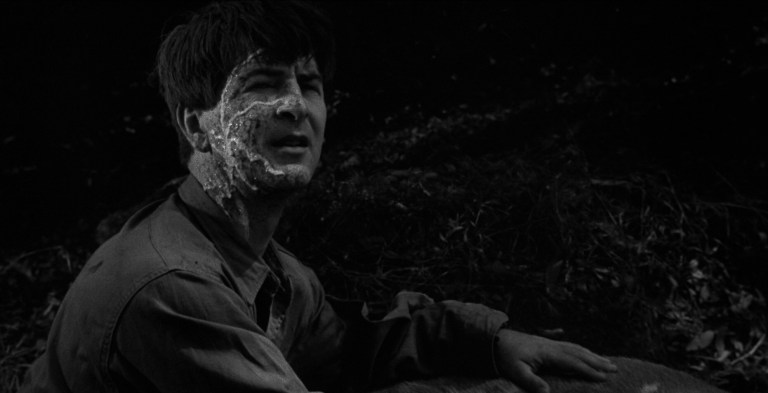
Whereas most horror involves fantasy and a strictly personal element—a fictional werewolf attacks a young maiden—nuclear-war movies are perhaps the most horrifying genre of all because they involve an actual threat that to this day is capable of wiping out life on Earth several times over.
Table of Contents
After the so-called communist “Iron Curtain” fell apart in the late 1980s and early 1990s, nuclear war has mostly vanished as concern, but from the mid-1940s until that point, it was a firm fixture in the public consciousness. Human technology had advanced to the point where humans made it possible to wipe out all of humanity with the push of a single button—is there anything more horrifying than that? It would later become a concern yet again in Russo-Ukrainian War in 2022.
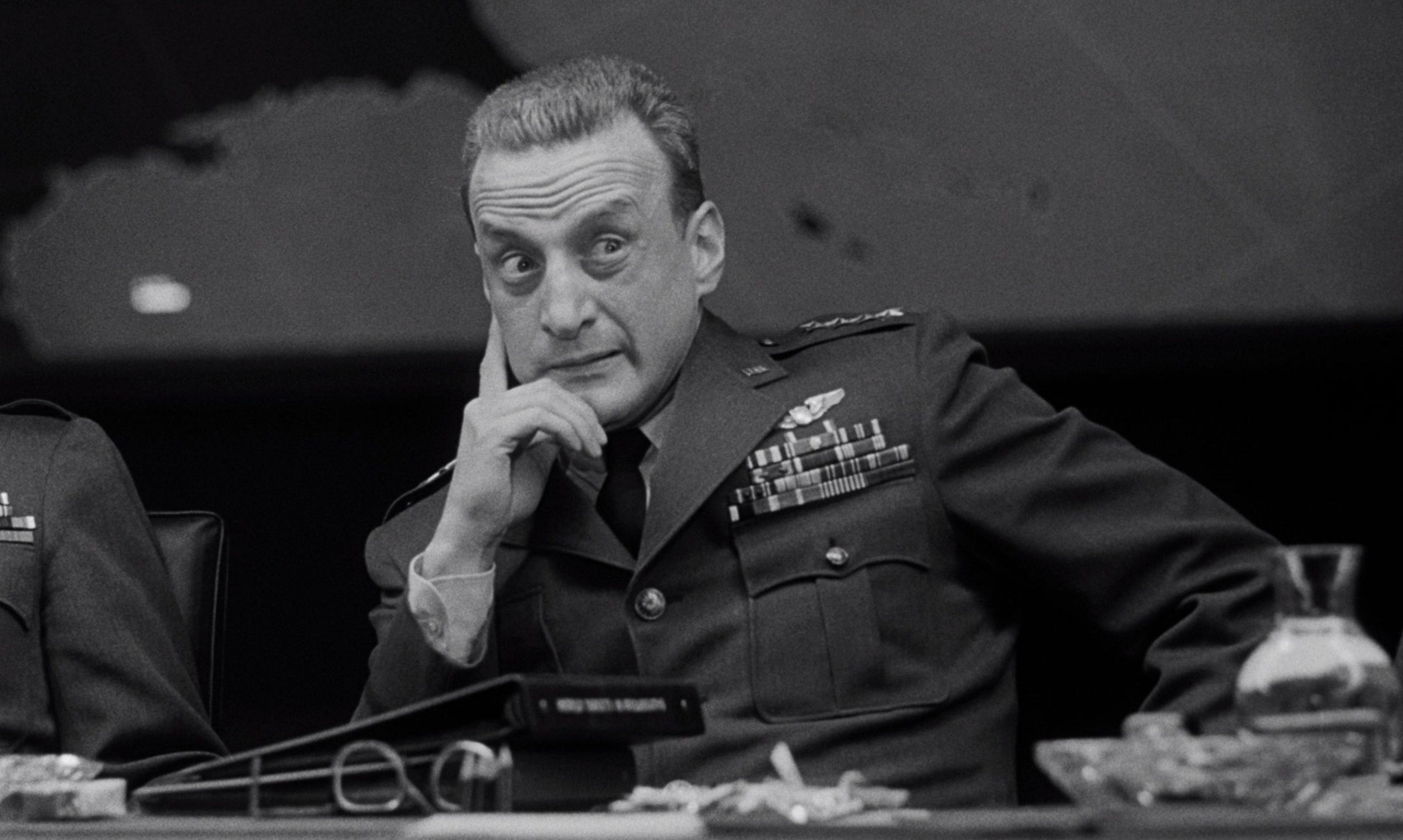
This list covers the long history of nuclear war movies from right after the first atomic bombs were dropped in Japan until the present. Explore the great threat of nuclear annihilation from the comfort of your couch.
Old Nuclear War Movies
Notorious (1946)
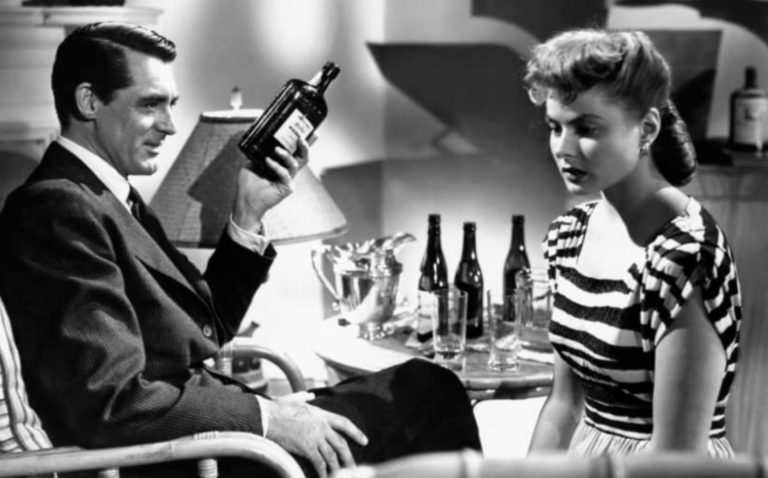
This Alfred Hitchcock masterpiece never mentions nuclear war directly, but filming started only a few months after the USA dropped an atomic bomb in Hiroshima, Japan, which caused Hitchcock to persuade screenwriter Ben Hecht to enter a plot device involving a cache of Nazi uranium being hoarded in a wine cellar. Hitchcock said that he and Hecht consulted a Nobel Prize-winning physicist to tell them how to make an atomic bomb; the physicist, Dr. Robert Millikan, refused, but he told them that such a bomb only needed enough uranium to fit in a wine bottle. Hitchcock also claimed that after introducing uranium into the film’s plot, the FBI trailed him for at least three months. Interestingly, this would be the first and last film to depict Nazis as hoarders of uranium—within only a few months, the designated political movie villains would all be communists.
Invasion, U.S.A. (1952)
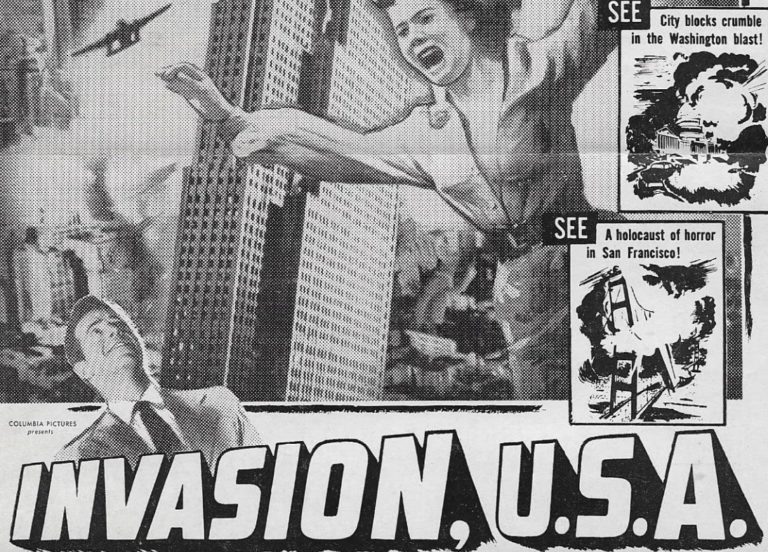
This is the first full-blown Red Scare nuclear-war film, and it was made right at the dawn of the McCarthy Era when all-out atomic war with Russia was seen as an inevitability. Much of the film is set in a Manhattan bar, where patrons argue about politics while viewing TV reports that “The Enemy”—presumed to be the Soviet Union—has started attacking Alaska, which it is using as a staging area for further attacks within the Continental USA. All Movie wrote, “Written with a sledgehammer rather than a typewriter, Invasion’s screenplay hammers home its point relentlessly, and if it feels that someone in the audience may perhaps have missed a point, it is happy to repeat it again and again.”
The Atomic Kid (1954)
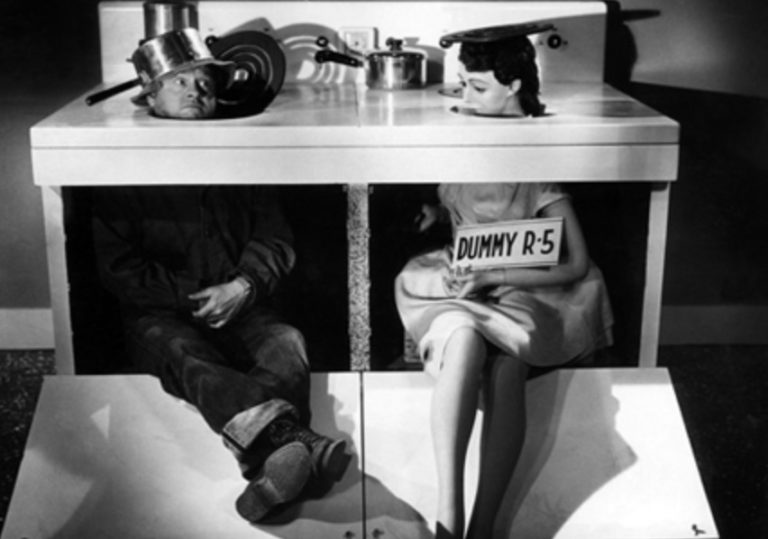
In this oddball nuclear-war comedy, popular film star Mickey Rooney stars as a bumbling simpleton named Blix Waterberry who was innocently walking through the desert eating a peanut-butter sandwich when he stumbles onto an active nuclear test site and gets exposed to radiation after an A-bomb is detonated in the sky directly over his head. He becomes radioactive, finds he has special new powers, and is hired by the FBI to help infiltrate a spy ring. The New York Times wrote, “Five minutes or so are genuinely funny, the rest is a fair, misguided try.”
Godzilla (1954)
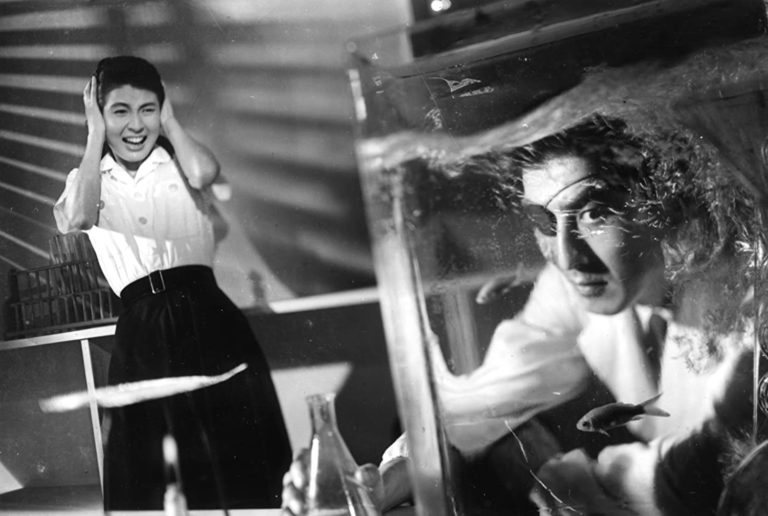
Less than a decade after Hiroshima and Nagasaki were leveled by American nuclear bombs, Japanese filmmakers made this monster movie about a giant prehistoric dinosaur who’d been hibernating deep in the Pacific Ocean, only to be awakened by atomic-bomb tests, whereupon he stomped his way into Tokyo and destroyed it. A reviewer for the BBC wrote, “Godzilla has a lot to say about war, and the arrogance of presuming to control indiscriminate, overwhelming power. But even its heaving subtext aside, this is a landmark in the history of filmmaking, and must be seen.”
Day The World Ended (1955)
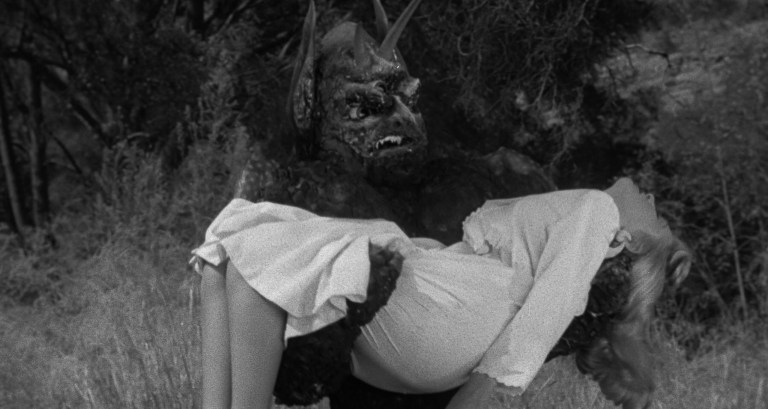
Day The World Ended is 1950s sci-fi movie about a nuclear apocalypse and quirky personalities that survive it. Directed by Roger Corman, this is one of Corman’s more campy and forgotten films. Nuclear war ravaged the world and the lone survivors must figure out how to live, adding further harm to injury a strange creature created from atomic radiation lurks and haunts them.
Kiss Me Deadly (1955)
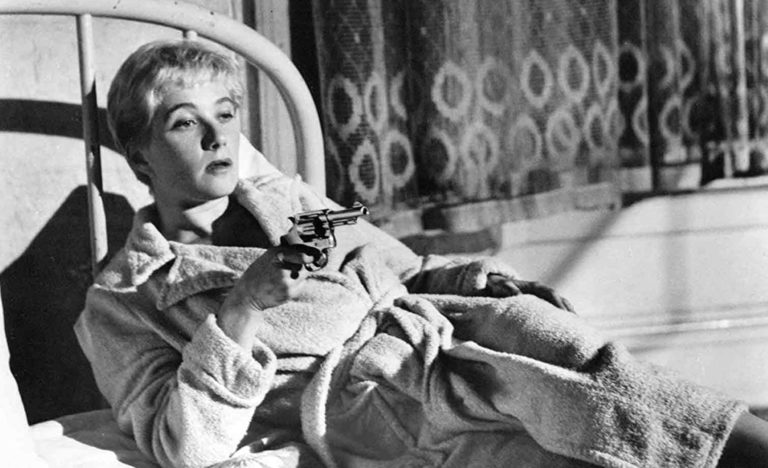
Although nuclear war is not directly referenced, central to the plot is “the great whatsis,” a mysterious small glowing suitcase that is hot to the touch. SF Gate writes, “This picture, about a civilization on the edge of the apocalypse, ends with the bitter, haunting image of humanity returning to the slime.”
On The Beach (1959)
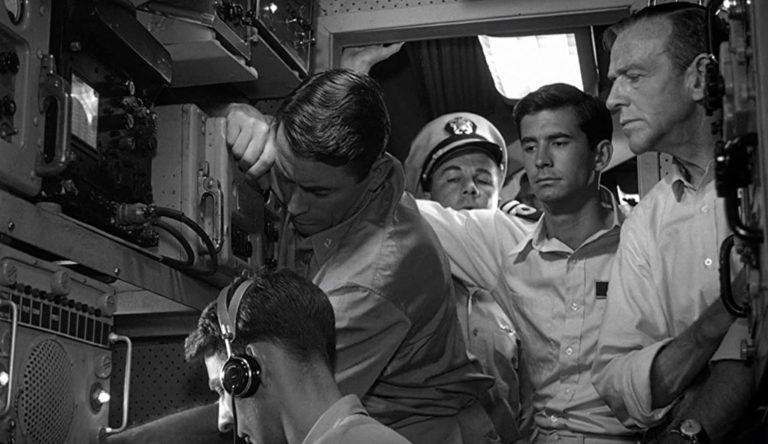
This extremely grim film set in Australia is an adaptation of a novel that takes place in the months following a nuclear war between America and Russia—and Australians have only a few months before the cloud of nuclear fallout reaches them and wipes out their continent. The tension is wrought from how everyone attempts to go about their daily business knowing that they will die soon, anyway. In a rare non-dancing role, Fred Astaire is a scientist who wonders, “Who “would ever have believed that human beings would be stupid enough to blow themselves off the face of the earth?” 2020 Movie Reviews wrote, “The most interesting aspect of On the Beach is the way in which it depicts life under sentence of death continuing pretty much as normal under the circumstances. People just carry on with their lives because they don’t know what else to do. Underscoring this normality, though, is a strand of tacit desperation that bubbles to the surface only under stress or intoxication.”
The Day the Earth Caught Fire (1961)

Simultaneous nuclear-bomb tests by the USA and Russia have thrown the Earth off its course by eleven degrees, causing it to hurtle toward the sun, making the planet overheat, and even causing cold and foggy London to feel like a parched desert. Scientists scramble to correct the problem before it’s too late. A writer for the BBC said, “Guest’s strong direction ensures crisp pace throughout, and the use of a low-key, pseudo-documentary style and mock newsreel footage is extremely effective in building tension.”
Panic in Year Zero! (1962)

Oscar-winning actor Ray Milland (The Lost Weekend) directed and starred in this apocalyptic film that takes place in California shortly after LA has been wiped out by a nuclear bomb. Milland was drive his wife, daughter, and his daughter’s boyfriend (played by teen idol Frankie Avalon) up to the High Sierras on a camping trip when the bomb struck, and Milland discovers to his dismay that if he hopes to survive, he may have to start killing people. A reviewer for Time Out said, “Panic in Year Zero, about the aftermath of the devastation of Los Angeles by nuclear attack, stands as an extraordinary reminder of just how close avant-garde and popular movies can get in times of social upheaval.”
Ladybug, Ladybug (1963)
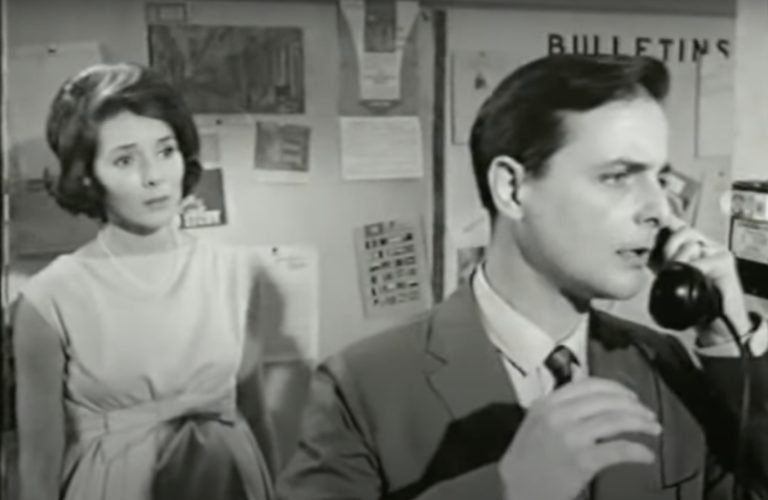
The film is set in the previous year’s Cuban Missile Crisis and is partially based on a true story about a nuclear-war drill at an elementary school. At the isolated school, warning sirens start sounding that a nuclear war is imminent, and teachers are asked to walk students home to safety. The final shot is horrifying—a small boy, looking up at the sky, keeps screaming “Stop!” at the sight of bombers flying overhead. Teenage Frankenstein blog said, “this is one of the few films to deal with war which never glamorizes it or makes it fun. The oncoming nuclear winter is just a bleak finality to the emptiness of existence….This arty melodrama manages to be subtle while making a case against the arms race.”
Dr. Strangelove Or: How I Learned To Stop Worrying And Love The Bomb (1964)

Considered both one of the best comedies in film history as well as one of the finest American films ever made, this Stanley Kubrick-directed vehicle stars Peter Sellers in three separate roles—the US president, a nervous British soldier, and as the title character, a wheelchair-bound German scientist—who must deal with the fact that a psychotic Army general who believes the communists are attempting to infiltrate our “precious bodily fluids” has ordered a nuclear strike on Moscow. Roger Ebert lavished the film with praise: “The Bomb overshadowed global politics. It was a kind of ultimate hole card in a game where the stakes were life on earth….If movies of this irreverence, intelligence and savagery were still being made, the world would seem a younger place.”
Fail-Safe (1964)
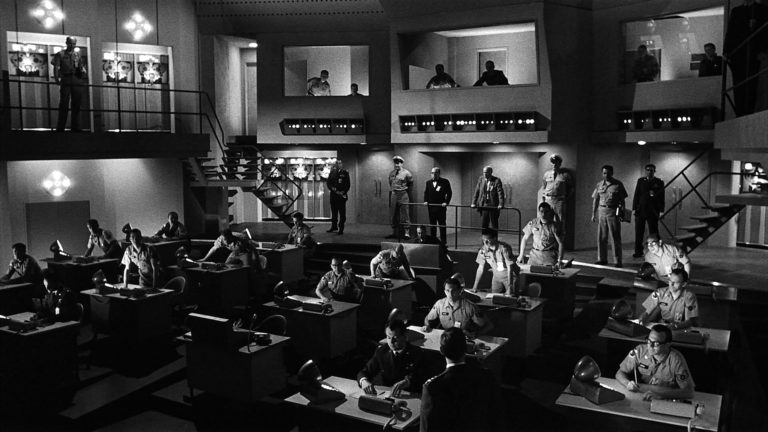
When a computer error sends US bombers into Russia to bomb Moscow into oblivion, the president (Henry Fonda), who must inform Russian officials what has happened while desperately attempting to prevent the end of the world. This is almost the exact plot of Dr. Strangelove, but without the comedy. According to Film Frenzy, director Stanley Kubrick insisted that Columbia pictures release his comedic Dr. Strangelove before Fail-Safe, which covers the same themes but much more soberly. As a result, Fail-Safe floundered at the box office.
Goldfinger (1964)

In what many considered the finest installment in the ongoing James Bond film series, the dashing British spy is pitted against Goldfinger, a businessman with financial interests in the gold market who, through his “Operation Grand Slam,” attempts to give the Chinese an advantage over the USA by planting a dirty bomb at Fort Knox and irradiating America’s gold supply, rendering it worthless. At one point, Bond finds himself handcuffed to the bomb and held for ransom by Goldfinger. Special note goes to the character of Oddjob, a burly Asian henchman of Goldfinger’s who kills people by flinging his steel-rimmed hat at people as if it were a lethal Frisbee.
The War Game (1966)
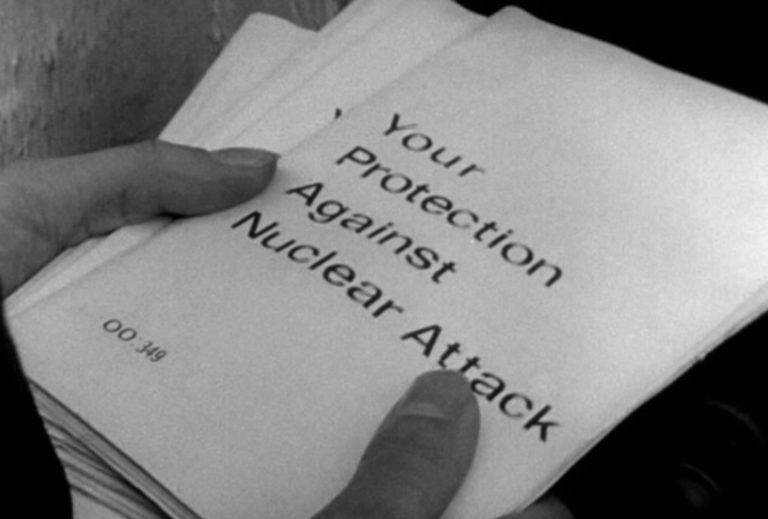
Shot in the documentary style of a TV news report although it’s a 100% fictional drama, The War Game shows what happens in the weeks directly following a Russian nuclear attack against Great Britain. Roger Ebert said that some sequences “are certainly the most horrifying ever put on film….Orphaned children stare into the camera, their arms and chests a mass of scar tissue. Men who have escaped injury go into a state of fear and shock from the things they have seen.”
Planet of the Apes (1968)
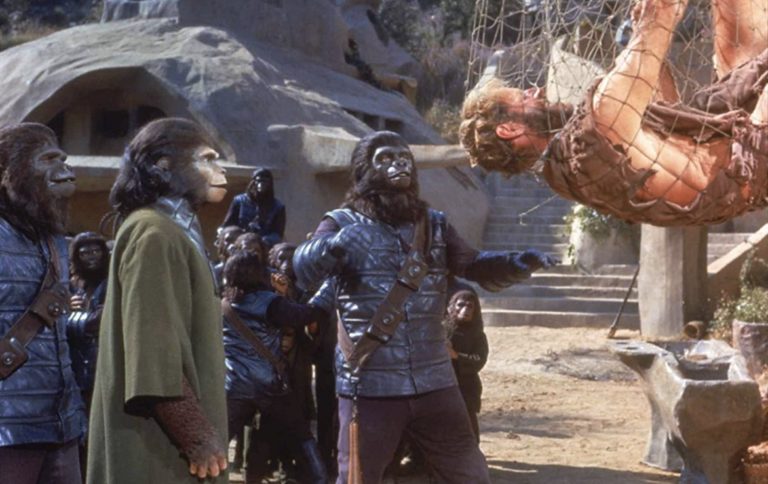
In this classic and indefatigable tale of a dystopian future where apes have ascended above humans in the evolutionary pecking order, Charlton Heston stars as an astronaut who was stranded on a planet where apes kidnap him and are shocked to see he can speak and reason and even identify archeological artifacts of the previous human civilization. It’s not until the very end that you realize the film is about nuclear war—when Heston sees the remains of the Statue of Liberty on a beach and realizes he’s on Planet Earth after human civilization had been wiped out by nukes.
Colossus: The Forbin Project (1970)
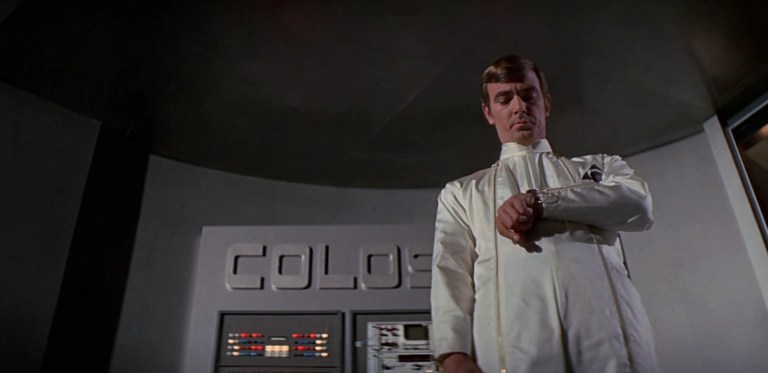
Nuclear deterrence is taken to frightening extremes in the science fiction thriller Colossus: The Forbin Project. The United States creates a supercomputer to control its and its allies nuclear arsenal, but the computer begins to take a life of its own (and full control of the nukes). Meanwhile, the Soviet Union builds their own supercomputer, and the two machines collude to end all war by any means necessary. The movie is fun and exciting, and the cold logic of the film’s supercomputers chillingly resonates with real-life policies in a timeless way.
A Boy and His Dog (1975)
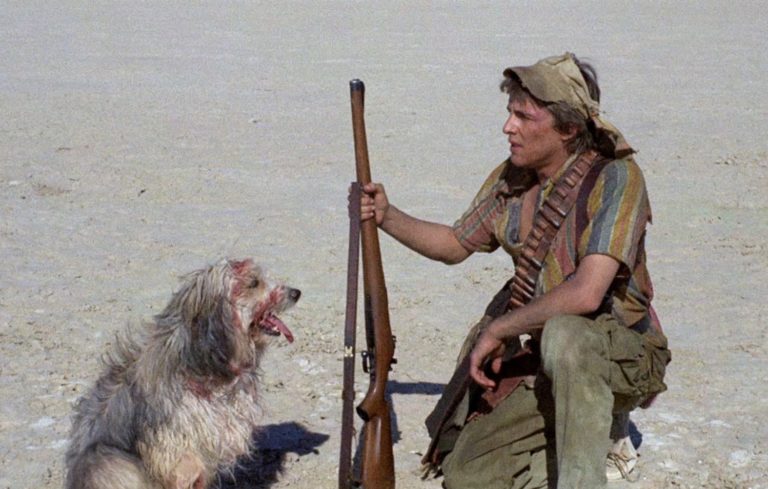
Don Johnson of Miami Vice fame stars in this black comedy sci-fi film about a post-apocalypse world that is based on a short story by Harlan Ellison. Unrestrained by traditional morality, Johnson’s character roams the ravaged post-American landscape with his dog named “Blood”—who has the miraculous ability to speak telepathically so that only Johnson’s character can hear him. Toward the end, Johnson must choose between a woman and his dog. The final shot shows Johnson and his dog, silhouetted on a hill and luxuriating in what appears to have been a very satisfying meal.
The Spy Who Loved Me (1977)

Another film in the Bond series where nukes are a central plot device, but unlike Goldfinger, this one stars Roger Moore instead of Sean Connery as Agent 007. A reclusive lunatic named Karl Stomberg seeks to bait the USA and Russia into a nuclear war, after which Stromberg plans to build a new civilization under the ocean. Only moments before World War III is launched, Bond is able to reprogram American and Soviet submarines to fire on one another instead of on Moscow and New York City.
The China Syndrome (1979)
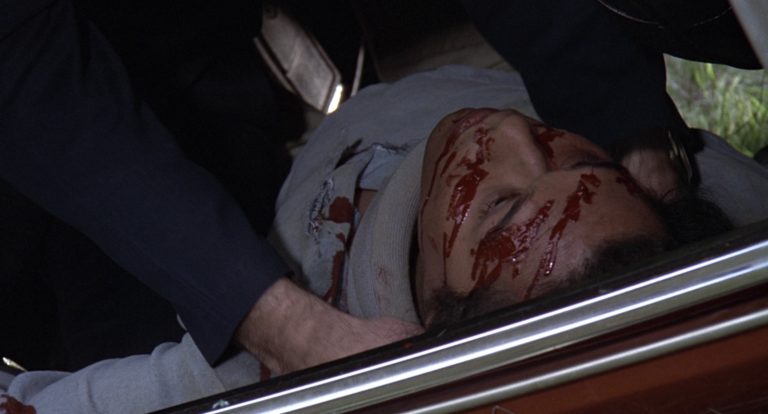
Jack Lemmon stars as a supervisor at a mythical nuclear-power plant outside of Los Angeles that experienced a near-meltdown. Jane Fonda stars as a TV reporter who tries to get to the bottom of the story. The China Syndrome would have escaped notice if not for a real-life catastrophe that occurred shortly after its release: According to Cinecaps Digest, “The nuclear power industry, of course, decried the film as being ludicrous and unfairly defamatory upon its release…then, less than two weeks later, the Three Mile Island [nuclear plant] accident occurred.”
New Movies about Nuclear Annihilation
Porno Holocaust (1981)
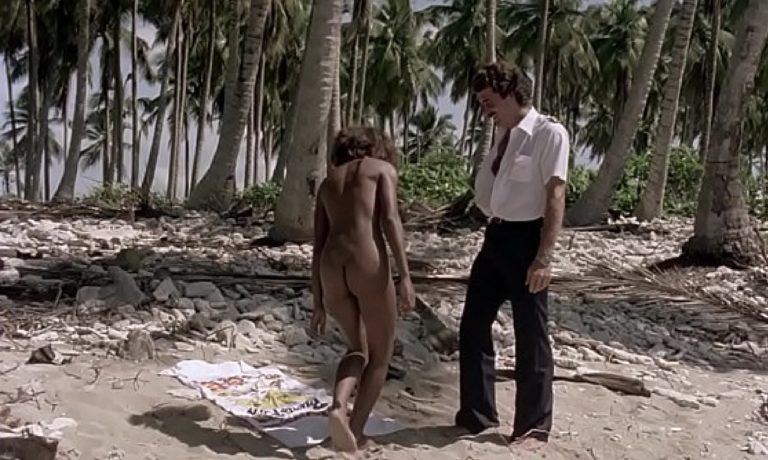
Probably the first and only film to mix the theme of nuclear devastation with actual explicit pornography, Porno Holocaust involves a group of scientists who travel to a secluded island where nuclear weapons testing had occurred in 1958, leading to rumors of mutant animals and a murderous monster. After one scene in which a doctor has explicit sex with his wife, he goes for a swim and is killed by the nuclear-mutated monster, who then rapes and kills the doctor’s wife. According to All Movie, “The dreaded radioactive monster is a disappointment when he finally appears, being nothing more than a well-endowed actor with a few lumps of putty on his face and tattered clothes.”
Silkwood (1983)

This film is based on the true story of Karen Silkwood, a worker at an Oklahoma plutonium plant who got accidentally exposed to radiation, announced her intentions to go public with the story, and then mysteriously died in a car accident while she was driving to talk to a New York Times reporter along with several incriminating documents—the reason people think she was murdered is that her car did not contain any of those documents after the accident. Meryl Streep stars as Silkwood, Jeff Bridges is her boyfriend, and Cher is their lesbian friend Dolly. Film Fanatic says, “The ‘scrub down’ showers — shown being given to Silkwood herself and to a terrified co-worker (stage actress Sudie Bond) — remain among the most horrifying scenes in non-horror cinema.”
WarGames (1983)
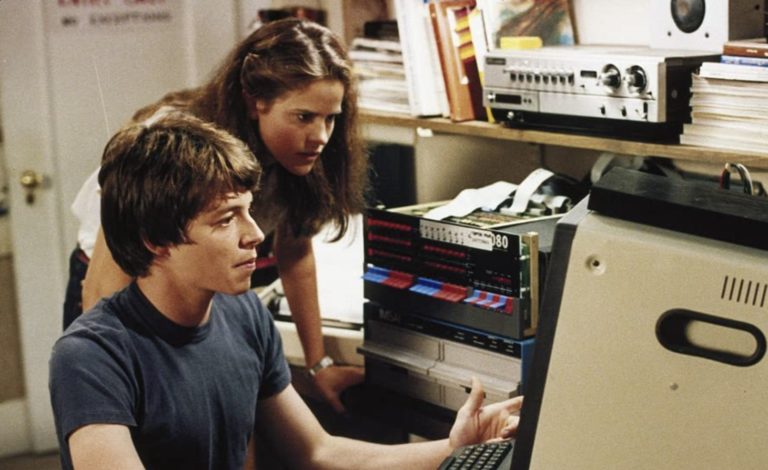
In what is also one of the first films to mention computer hacking, Matthew Broderick stars as a young man whose online adventures find him tapping into US military databases and almost accidentally triggering a thermonuclear war. Roger Ebert wrote, “Sooner or later, one of these self-satisfied, sublimely confident thinking machines is going to blow us all off the face of the planet. That is the message [of this] scary and intelligent new thriller that is one of the best films so far this year.”
Special Bulletin (1983)
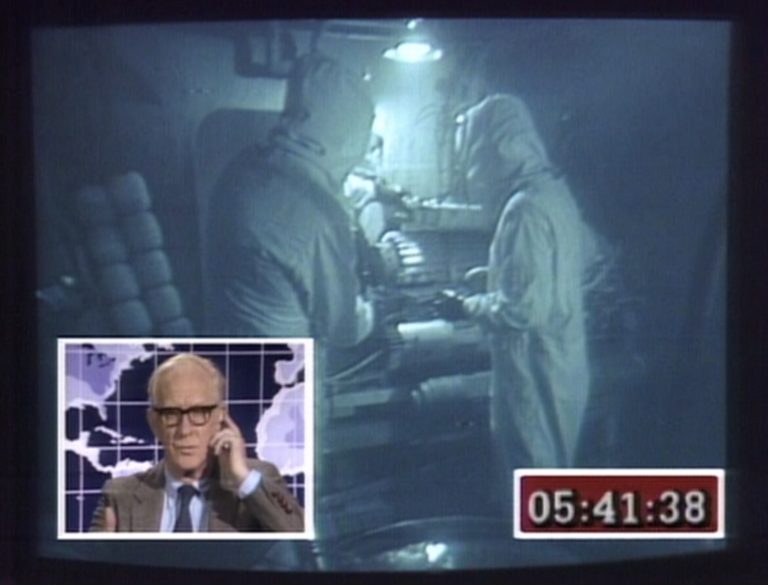
This TV movie about nuclear apocalypse—the first of many such TV movies that year—is centered in Charleston, SC, where a team of anti-nuclear-power scientists/terrorists threaten to detonate their own dirty bomb if world governments don’t immediately agree to unilateral nuclear disarmament. They ultimately make good on their threat. According to All Movie, “the production was so authentic-looking (right down to the fabricated previews of upcoming network dramatic programs) that thousands of panicky viewers called in to NBC, demanding further information on the siege of Charleston.”
Testament (1983)

Testament was originally intended as a PBS TV movie, but it was rushed into theaters mere weeks before The Day After premiered on ABC. Jane Alexander stars as a mother of three children who must deal with the fact that San Francisco has been leveled by a nuclear bomb and the world is falling irrevocably apart. Roger Ebert says the film made him cry both times he saw it: “Testament may be the first movie in a long time that will make you cry. It made me cry. And seeing it again for the second time, knowing everything that would happen, anticipating each scene before it came, I was affected just as deeply.”
The Day After (1983)
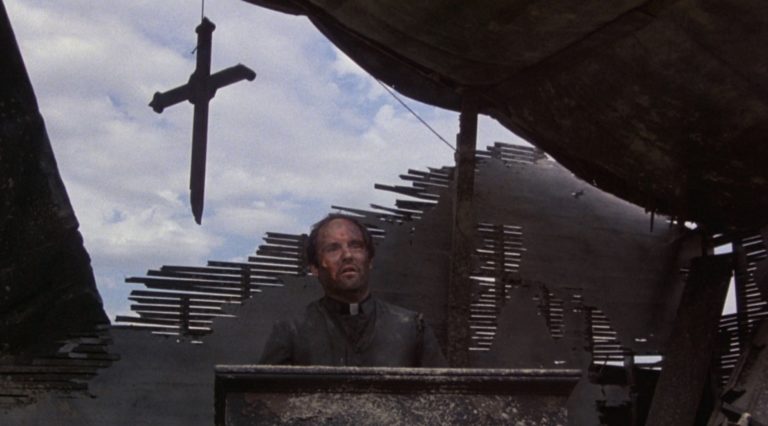
Nearly 40 years after its TV debut, The Day After is still the most-watched television film of all time, with an estimated 100 million Americans tuning in—including then-President Ronald Reagan, who said it made him reconsider his bellicose talk toward the Russians. The plot involves a nuclear attack on Lawrence, Kansas, and how citizens deal with the inevitable fallout and eventual cessation of human life. A reviewer for The New York Times wrote, “The special quality of The Day After…is its feeling of despair. No crops will grow in irradiated Kansas; the farmland is covered with contaminated ash. Infants will be born deformed. Medicine has no cures. The world has been arrested, and continuity is gone….The possibility of thermonuclear horror – horror is too pale a word; the language has no word for it – is the overwhelming matter of our time.”
Threads (1984)
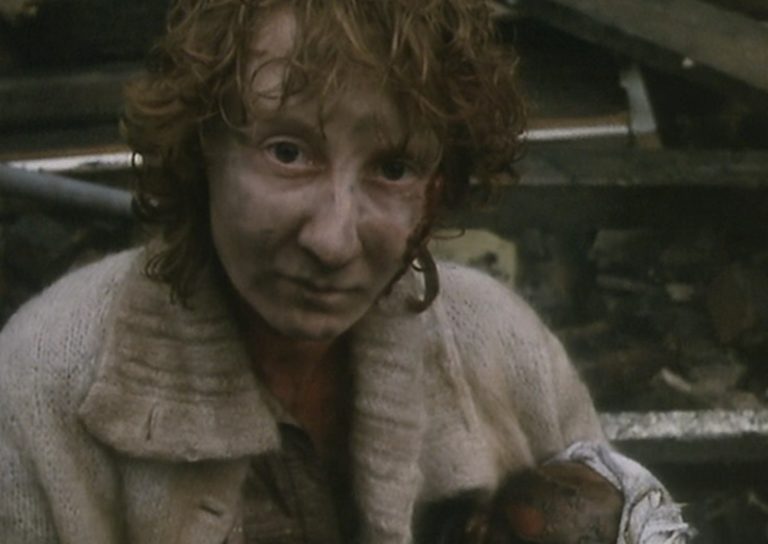
Threads is a British and Australian joint effort that was devised, filmed, and released hot on the heels of The Day After’s unprecedented success. It is thought to be the first film to deal with what happens after a nuclear attack—specifically the rocketing cancer rates, starvation, and inevitable death of humanity. Some consider it one of the most disturbing films ever made. In August 2000, a reviewer for the BBC wrote, “While it was considered ground-breaking at the time, this BBC feature has dated rather horribly…but the scariest thing about this film is probably the accuracy with which it reflects how screwed we’d be in such a situation.”
Spies Like Us (1985)
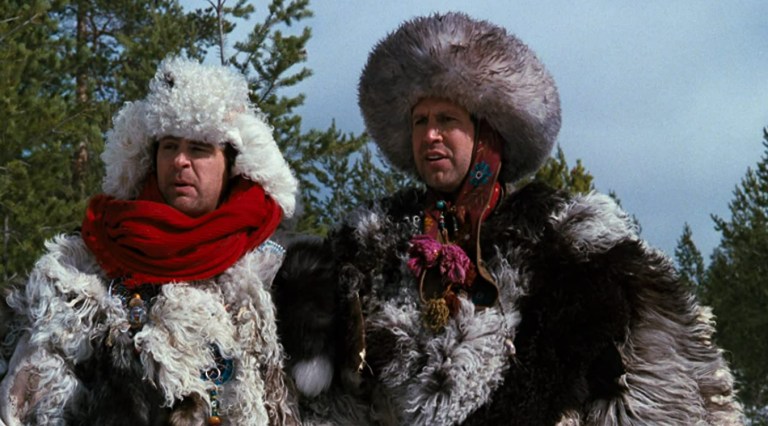
Dan Aykroyd and Chevy Chase star as inept secret agents sent overseas by the US military to distract the United States’ enemies from the real agents sent on an important mission in the Soviet Union. When the real mission hits a snag, Aykroyd and Chase are pulled into a scenario that could lead to all-out nuclear war. Spies Like Us is a goofy comedy featuring two comedy icons at the height of their popularity.
When the Wind Blows (1986)

In what has been called “the bleakest animated film you’ll ever see,” When the Wind Blows follows elderly couple Jim and Hilda Bloggs, two British citizens who survive a nuclear strike by living in their homemade fallout shelter but slowly realize to their dismay that all their preparation and adherence to strict government guidelines about how to survive a nuclear attack will not prevent their imminent demise.
Hell Comes to Frogtown (1988)
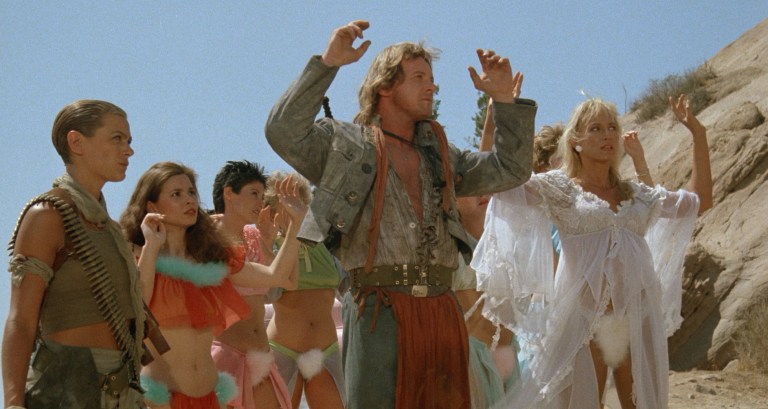
Fallout from worldwide nuclear devastation has left most of he surviving men on the planet sterile. Sam Hell, one of the few fertile men still alive, is conscripted into a mission to retrieve a group of fertile women who were kidnapped by the mutants of Frogtown. Then the government can work on repopulating the world. To ensure that Hell complies with his orders, he is fitted with an electrified codpiece that can be detonated if he tries to escape. Hell Comes to Frogtown not a great movie, but it is great, trashy fun.
Miracle Mile (1988)
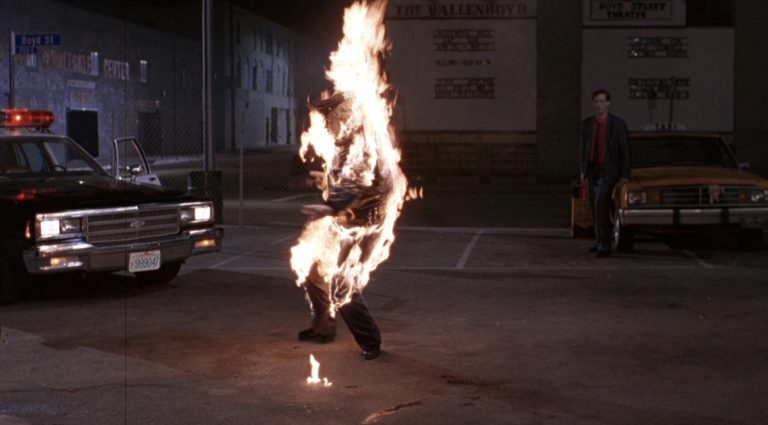
Purely by chance, the person who set off a nuclear attack on LA misdialed the person he intended to inform and instead reached a public pay phone—and a young man picks up the call to hear that a bomb will level LA in 70 minutes but doesn’t know whether he should tell anyone. Roger Ebert wrote, “Miracle Mile has the logic of one of those nightmares in which you’re sure something is terrible, hopeless and dangerous, but you can’t get anyone to listen to you….What the movie confirmed for me is something I’ve always suspected: that if there’s ever an hour’s warning that the nuclear missiles are on the way, thanks all the same, but I’d just as soon not know about it.”
By Dawn’s Early Light (1990)
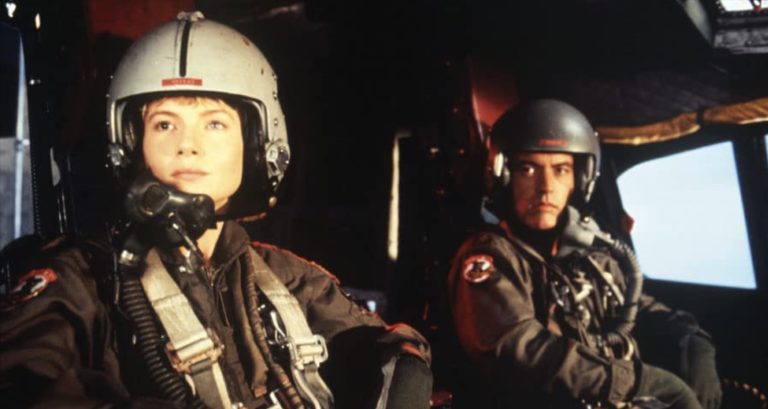
Since this film was released shortly after the Berlin Wall fell, it is the last in a long tradition of nuclear-war films where the primary combatants are the USA and the Soviet Union. It was an HBO original film that was set in 1991 and based on the 1983 novel Trinity’s Child. Another plot device involves whether the “US President” who ordered a nuclear attack is an impostor.
Under Siege (1992)

Eccentric martial artist and action-film star Steven Seagal stars as an ex-Navy SEAL who is tasked to defeat a group of mercenary arms dealers who seize a Navy battleship, steal the nuclear-tipped Tomahawk missiles, and attempt to sell them on the black market. A reviewer for the Washington Post wrote, “Seagal is his usual cool, efficient self, Busey his familiar neurotically edgy self. It’s [Tommy Lee] Jones who walks away with the best lines and the most vivid performance as an unrepentant ’60s radical and renegade CIA killer whose cannons have been loose on the deck for a long time.”
Crimson Tide (1995)
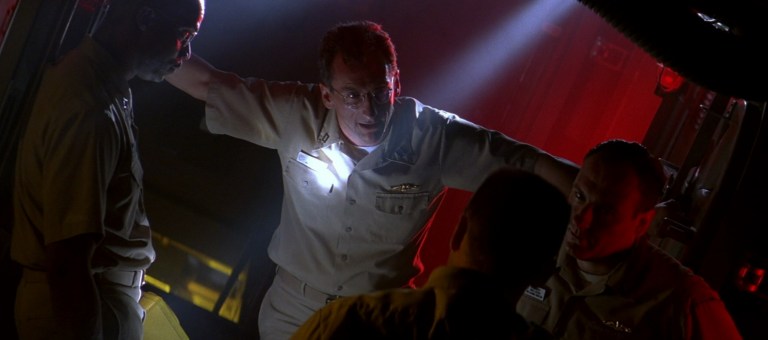
Loyalties come into question as nuclear war looms in the fun action thriller Crimson Tide. An extremist group has taken control of a nuclear installation in Russia, and a US submarine heads out with orders to make a pre-emptive nuclear strike if the situation deteriorates. When communications on the sub go down, the Captain and his Executive Officer are split on whether to launch their nuclear missile, and the crew is divided along with them. Crimson Tide features a stellar cast including Denzel Washington, Gene Hackman, Viggo Mortensen, and James Gandolfini.
Deterrence (1999)
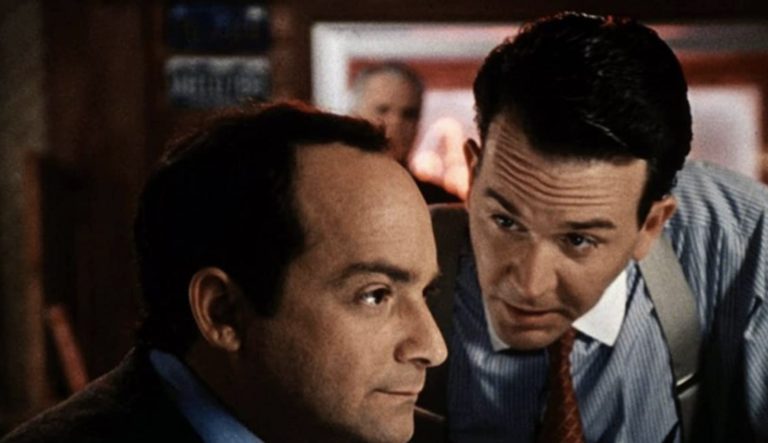
In this low-budget but frightening thriller, Kevin Pollak stars as President Walter Emerson—who never held elected office but was appointed as vice president by a president who then died and left Emerson in command—who gets trapped in a Colorado blizzard while campaigning for president in the year 2008 and then is forced to handle a standoff with Iraqi officials where both sides are threatening nuclear annihilation.
The Road (2009)

Based on an award-winning Cormac McCarthy novel of the same name, The Road has only two main characters—The Man (Viggo Mortenson) and The Boy (Kodi Smit-McPhee), a father and son who must wander through the detritus, danger, and carnage of a postnuclear world. Throughout the film, their only quest is to reach the coast—it’s never explained why, but it provides one tiny sliver of hope in a hopeless world.
The Divide (2011)
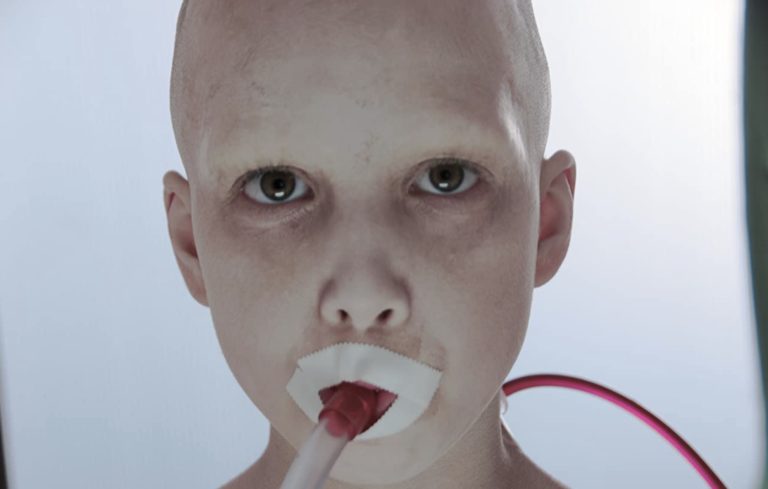
After Manhattan is rocked by a series of nuclear explosions, a small group of apartment-building residents seek shelter in the basement, where they are then locked in against their will by a sadistic janitor. The Austin Chronicle said, “The Divide opens with a bang and ends with a whimper. In between, there’s enough post-apocalyptic scenes of man vs. man, man vs. woman, and man vs. still other men in pristine white biohazard suits to qualify it as one of the most downbeat, end-of-the-world films ever made, and made poorly at that….Save the humans? Why bother?”
The Dark Knight Rises (2012)
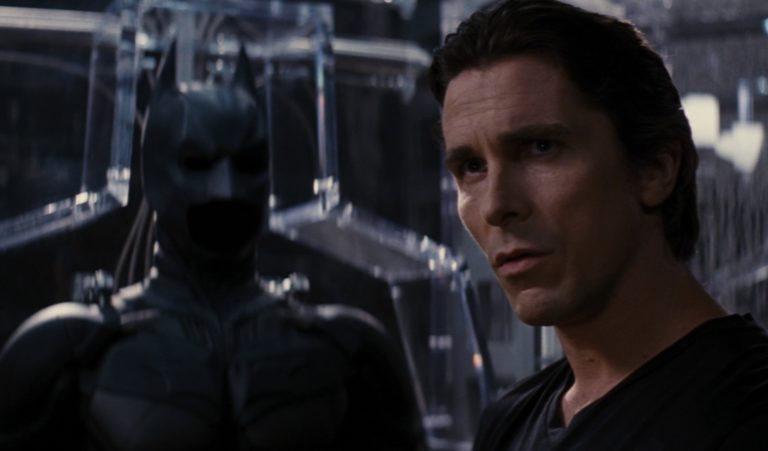
In this installment of the Dark Knight series, Christian Bale stars as Batman, who must wage battle against Bane, a terrorist who is holding Gotham City hostage with a neutron bomb—which kills only people and leaves buildings intact. Roger Ebert wrote, “This is a dark and heavy film; it tests the weight a superhero movie can bear. That [director Christopher] Nolan is able to combine civil anarchy, mass destruction and a Batcycle with exercise-ball tires is remarkable.”
Phantom (2013)

Ed Harris and David Duchovny star in Phantom, a submarine movie set in the 1960s. During the Cold War, aging Captain Dmitri “Demi” Zubov (Harris) is sent on one last mission for the Soviet Union. Demi is not truly in control of his submarine though, as a rogue group of Soviet operatives has infiltrated the sub and plan to use it to start a nuclear war between the United States and China. Phantom is worth watching for the cast alone which, in addition to Harris and Duchovny, also stars Lance Henriksen, William Fichtner, and Sean Patrick Flannery.
How I Live Now (2013)

How I Live Now views nuclear was from the perspective of a teenage American girl, Daisy, played by Saoirse Ronan. After being sent to stay with her aunt and cousins in the English countryside, war breaks out when a nuclear bomb detonates in London. Daisy then experiences the heartbreak of war as she and her cousins are split apart when the fighting reaches their home. How I Live Now also stars George MacKay and Tom Holland.
